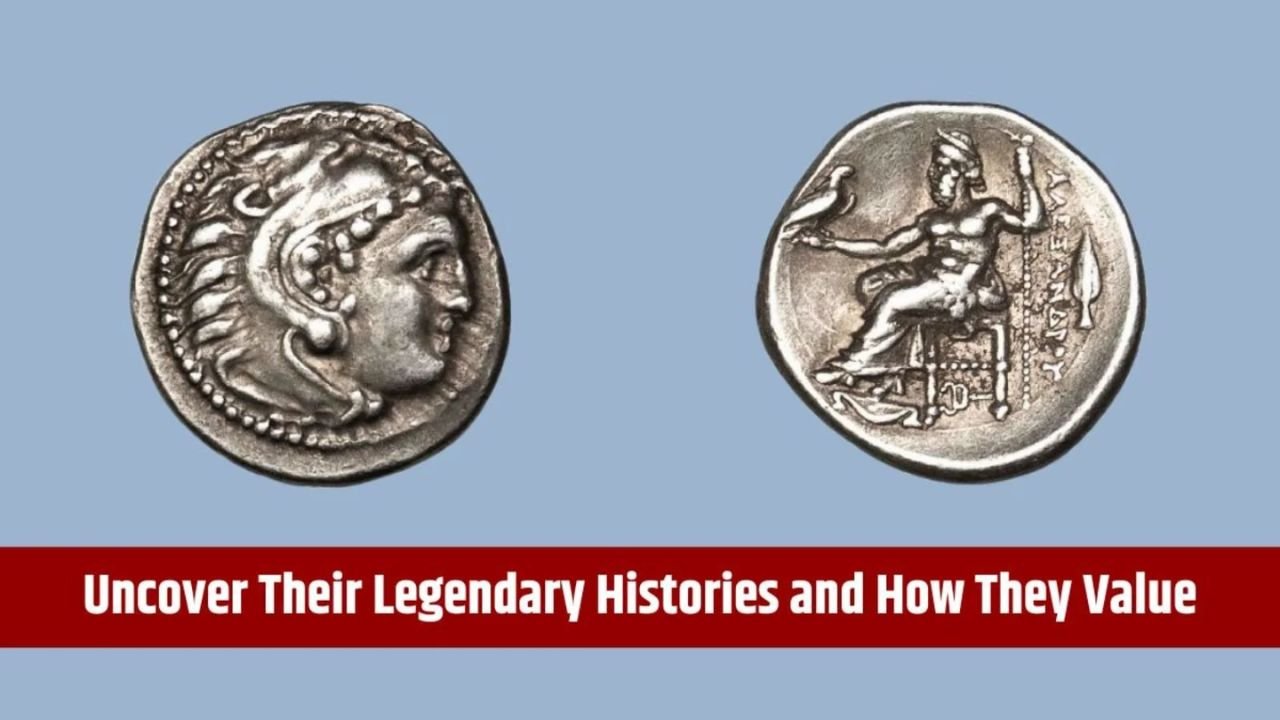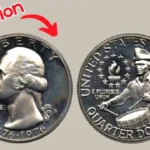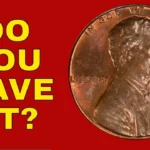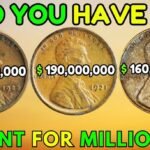In the realm of numismatics, tales of unexpectedly valuable coins often spark waves of excitement, but few stories have ever gripped public fascination quite like that of the Rare Bicentennial Quarter rumored to be worth a staggering $2.5 billion. As outrageous as that may sound, the legend persists—whispered through online forums, coin collector circles, and even viral videos—keeping hope alive that such a historic coin might still be hiding in plain sight.
What elevates this particular narrative beyond mere myth is its incredible allure: that a small piece of U.S. currency minted in 1976 to honor the nation’s 200th birthday could today be worth more than the GDP of some small countries. And what’s more? Many believe this Rare Bicentennial Quarter is still in circulation in May 2025, waiting to be discovered in a coin jar, between couch cushions, or even at the bottom of a vending machine.
Let’s unravel the legend and explore why this coin, commemorative in nature but ordinary to most eyes, has become the focus of an international treasure hunt.
The Lincoln Wheat Penny Valued at $1.5 Million, Still in Circulation
Rare Bicentennial Quarter: A Tribute to America’s 200th Year
The U.S. Mint released the Bicentennial series in 1975 and 1976 to celebrate 200 years of American independence. These included redesigned versions of the quarter, half dollar, and dollar coins. The Rare Bicentennial Quarter stands out because it replaced the familiar eagle on the reverse side with a striking image of a Colonial drummer boy, flanked by a torch and encircled by thirteen stars—representing the original colonies. Jack L. Ahr, the designer of this special reverse, created a visual tribute steeped in patriotic symbolism.
All Bicentennial quarters carry the dual date “1776–1976,” distinguishing them from other quarters in circulation. Produced in both copper-nickel clad and limited 40% silver compositions, hundreds of millions were struck at the Philadelphia, Denver, and San Francisco mints. These coins were never particularly rare—at least not at first glance.
However, as with many things in numismatics, rarity is often defined not just by mintage numbers but by anomalies, errors, provenance, and mystery.
A Quarter Worth $2.5 Billion? Unpacking the Speculation
So where does the $2.5 billion valuation come from? The story behind the Rare Bicentennial Quarter commanding this astronomical price is rooted in speculation, mystery, and a touch of legend. Various unverified reports and viral posts have suggested that a unique version of the 1976 quarter exists—one that was never meant to see the light of day.
Some theories include:
-
Struck on a Gold Planchet: A mistake during the minting process could have resulted in a Bicentennial quarter being struck on a 90% gold planchet. The U.S. Mint never publicly acknowledged minting gold quarters during that time, but if such an error occurred, the coin’s intrinsic value would skyrocket.
-
Double Die or Strike Errors: Coins that show doubling of inscriptions or misaligned strikes are highly prized. If the Rare Bicentennial Quarter was produced with such a defect, especially during a special commemorative run, its worth could be exponentially higher.
-
Experimental Features: Some believe this legendary coin may feature unreleased or prototype details—secret marks, alternative alloys, or even test strikes done under classified conditions.
-
Historical Provenance: Ownership adds another layer of value in coin collecting. If a Bicentennial quarter had ties to a major historical figure or event, it could justify an incredible appraisal.
Despite the absence of verifiable documentation or a public auction validating the $2.5 billion figure, the narrative has achieved mythological status. It taps into the hope that anyone, anywhere, could stumble across this unassuming treasure—particularly in May 2025, as interest in rare U.S. coins reaches new heights.
Still in Circulation? The Thrill of the Search
Perhaps the most tantalizing aspect of the Rare Bicentennial Quarter legend is the claim that this multimillion—or even multi-billion—dollar coin remains in active circulation. Unlike coins securely stored in museums or private collections, this one is supposedly “out there,” waiting to be found by a lucky citizen checking their pocket change.
It’s a notion that adds urgency and possibility to everyday transactions. Could that quarter you just received at the grocery store actually be worth a fortune? Could the loose change jingling in your car console hold America’s rarest modern coin?
While statistically unlikely, it’s not impossible. Coin collectors have uncovered valuable treasures in ordinary places before. Whether it’s an overlooked error, an unrecognized metal composition, or a faint design variation, the smallest details can turn spare change into a prize worth pursuing.
A Dose of Reality: What Most Bicentennial Quarters Are Really Worth
Before you quit your job to start flipping quarters full-time, it’s important to ground this story in reality. The majority of Bicentennial quarters—despite their commemorative design—are not rare. Even now in May 2025, countless examples remain in use, worth exactly 25 cents.
That said, some Rare Bicentennial Quarter specimens do fetch modest premiums, especially those that are:
-
Uncirculated or High-Grade Proofs: Coins in exceptional condition, particularly those graded MS-67 or higher by third-party services like PCGS or NGC, can sell for $20 to $100.
-
Silver Composition Quarters: The 40% silver versions, produced for collectors, typically trade for between $5 and $25 depending on condition and silver prices.
-
Genuine Error Coins: If a Bicentennial quarter displays verifiable minting anomalies—such as double dies, off-center strikes, or incorrect planchets—its value can rise substantially.
The story of the Rare Bicentennial Quarter is therefore a blend of fact and fantasy. Most people will never encounter the mythical $2.5 billion version, but they might still come across valuable coins if they know what to look for.
How to Spot a Valuable Bicentennial Quarter
For those inspired to join the hunt, it helps to understand what might distinguish a truly rare coin from a common one. Here are some key tips:
-
Check the Date and Design: All Bicentennial quarters have the dual date “1776–1976.” Make sure it features the drummer boy design, not the standard eagle.
-
Inspect for Errors: Use a magnifying glass or loupe to examine the coin. Look for doubling in the lettering or unusual marks that could indicate a mint error.
-
Weigh the Coin: A standard clad quarter should weigh about 5.67 grams. A weight far outside this range might suggest a different metal composition.
-
Metallic Sheen and Tone: Silver versions tend to have a brighter or more muted tone compared to copper-nickel versions. Unusual coloration could hint at a unique alloy.
-
Get a Professional Appraisal: If you think you’ve found something unusual, take it to a certified coin dealer or grading service for expert evaluation.
The Cultural Power of the Rare Bicentennial Quarter
Beyond its potential monetary value, the Rare Bicentennial Quarter holds immense cultural weight. It represents more than just a collector’s item—it symbolizes patriotism, curiosity, and the idea that history is not confined to textbooks or museums. Sometimes, it jingles in your pocket or rests forgotten in a coin jar.
As this story continues to circulate, especially through platforms like TikTok, YouTube, and Facebook, more people are being drawn into the world of numismatics. The idea that anyone—regardless of background, wealth, or expertise—could stumble upon a life-changing discovery is powerfully democratic.
Final Thoughts: May the Search Continue
In May 2025, the legend of the Rare Bicentennial Quarter shows no sign of fading. Whether you’re a seasoned collector or just someone intrigued by the possibility of hidden wealth, the story continues to ignite imaginations and spark conversations across the country.
While the $2.5 billion figure may well be an exaggeration or myth, the enthusiasm it generates is very real. It encourages people to engage with history, pay closer attention to the everyday objects around them, and dream just a little bigger.
So next time you receive a quarter in change, take a closer look. That ordinary coin could be part of an extraordinary story—and who knows, you might just be the one to prove the legend true.
Some Important Link
| Telegram Group | Click Here |
| WhatsApp Group | Click Here |
| Home Page | Click Here |














